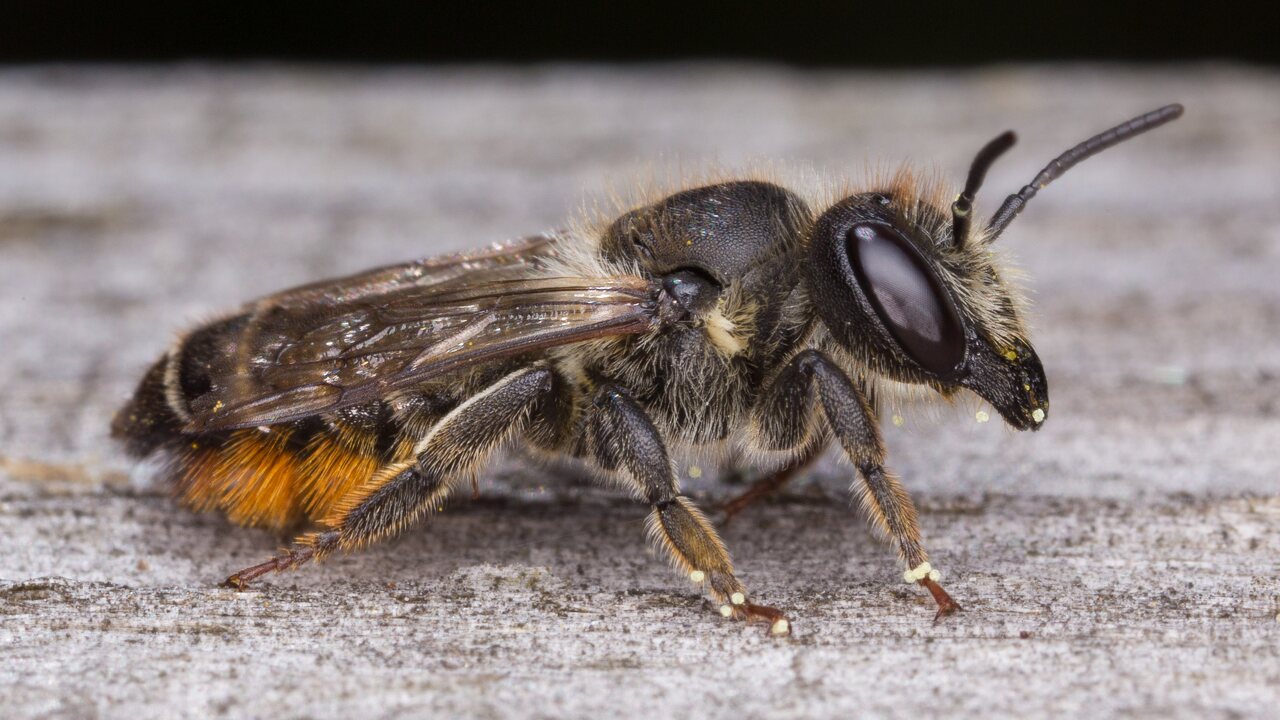
Megachile centuncularis · lapkirtė bitė
- patchwork leafcutter bee
- Rosen-Blattschneiderbiene, Rostfarbene Blattschneiderbiene
- Rosenbladskærerbi
- ruusunverhoilijamehiläinen
- tuinbladsnijder
- miesierka różówka
- en.wikipedia.org/wiki/Megachile_centuncularis
- bumblebeeconservation.org/patchworkleafcutterbee
- flickr.com/photos/63075200@N07/albums/72157633282322518/
- gbif.org/species/1335505
Megachile centuncularis is native to the northern hemisphere, being present in both North America and Eurasia. In western Europe, its range extends from Norway, Sweden and Finland southward to Spain and Italy. It occurs in eastern Ireland, and in Britain. This species is about 2 cm long and is largely black, the abdominal segments being fringed with golden hairs and the underside of the abdomen being clad with orange hairs. It is similar to Megachile versicolor.
The adult bee feeds on nectar obtained from various flowers, particularly thistles and brambles. It collects pollen to provision the nest from a wide range of flowers, including those of the families Asteraceae, Fabaceae and Hypericaceae.
This bee makes its nest in a variety of locations; in wood, in hollow stems, in wall cavities or crevices, or even soil. The bee uses its jaws like scissors to cut pieces of leaf to place in the nest; often rose leaves are used, or honeysuckle, horse chestnut, ash, birch or lilac. At the nest site, pieces of leaf are rolled up, provisioned with pollen, and one egg is laid in each package. Finally the nest entrance is sealed with about six discs of leaf. M. centuncularis overwinters before emerging from the nest, either as a pupa, or as a fully developed larva.
Ant paskutinio matomo tergito lyg ir yra gan daug juodų ilgų stačių plaukelių. Jei beveik nėra, tuomet gali būti panaši rūšis Megachile versicolor. det. Eduardas Budrys.
‥
0 comments
Add a comment